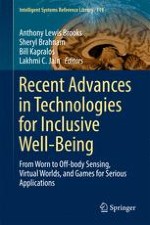This book presents current innovative, alternative and creative approaches that challenge traditional mechanisms in and across disciplines and industries targeting societal impact. A common thread throughout the book is human-centered, uni and multi-modal strategies across the range of human technologies, including sensing and stimuli; virtual and augmented worlds; games for serious applications; accessibility; digital-ethics and more. Focusing on engaging, meaningful, and motivating activities that at the same time offer systemic information on human condition, performance and progress, the book is of interest to anyone seeking to gain insights into the field, be they students, teachers, practicing professionals, consultants, or family representatives. By offering a wider perspective, it addresses the need for a core text that evokes and provokes, engages and demands and stimulates and satisfies.
